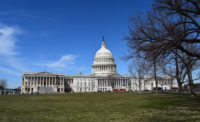During JP Morgan’s investor day, investors heard optimistic tones coming from JP Morgan’s CEO. Jamie Dimon, CEO referred to our situation as “Strong economy, big storm clouds” and he goes on to explain “I’m calling it storm clouds because they’re storm clouds. They may dissipate”. Dimon, who is known for his keen eye on the market, added that a recession is possible, but it would be unlike past downturns because of the unique mix of economic conditions we see ourselves in today.
I believe that all business owners should develop a 5-year Keep/Sell/Grow plan to remain successful. Without a plan, business owners are more likely to make emotionally driven decisions when crunch time comes, and this can lead to poor outcomes. When we plan for the future, we know exactly what we are going to do years in advance, so the decision-making process is decisive and clear regarding the goals of the firm as a whole. The most crucial decision to plan is the keep and sell cost-benefit analysis. There are pros and cons to both options, so it is crucial that we understand both sides of the coin.
The main reason to choose the keep side is the immense amount of money injected into the market since the start of the pandemic. We already see the devastating effects of these policies coming through in inflation numbers. The CPI has been coming in around 8% for a few months now and as the money supply continues to grow the nominal value of your business will go higher relative to the new money being pumped into the system. Another valid reason to hold your business for the long term is the low-interest rate environment. Lower interest rates equate to cheaper access to money which allows for the economy to grow at a faster pace.
There are also good reasons to want to be on the sell side of this equation during this season of uncertainty. Similar to what our friend Jamie Dimon was saying, this possible downturn would be unlike anything we have seen before with the mix of economic conditions we see in the market. High rates of inflation mixed with a lower interest rate environment certainly put Jerome Powell and The Federal Reserve in a hard place when deciding our monetary policy. The FED has tried to increase interest rates slightly, but the market has reacted rather harshly as I am sure we’ve noticed in our equity and bond portfolios. Inflation cooled slightly because of the rate hikes, but not nearly enough to keep interest rates where they are. The FED sees itself in between a rock and a hard place, which will promote uncertainty in the markets for years to come. In turn, this may be a solid opportunity to sell your business before further turmoil unfolds.
Since the COVID-19 pandemic, The Federal Reserve has injected 6 trillion into the market by way of open market security purchases and buying billions of US treasuries every single month. Even though we have seen a massive rally in asset prices over the past 24 months, this is an astronomical amount of currency injection which could send asset prices even higher, especially paired with higher-than-average inflation. The low interest rate environment may also keep us out of a period of contraction. Lower interest rates allow for easier and cheaper borrowing which drives an economy to its core. The FED has plans to raise these rates slowly throughout the year, but the last time Jerome Powell (current FED chairman) attempted this in 2018, he had to revert his course and lower rates once again. It is possible that Powell is forced to keep rates low again, even with high inflation. This is because the FED has a “dual mandate” and needs to account for unemployment along with inflation. Interest rates rising too quickly will lead to unemployment so it is quite possible that the FED will need to revert course similar to what we saw in 2018.
As of writing this piece, the S&P 500 index is trading up 77% off the Covid-19 pandemic lows but only 21% off January 2020 high that same year (shortly before the pandemic was announced). Comparatively, Ferguson ($FERG, largest publicly traded plumbing company) is up 155% off Covid-19 lows and 28% off January 2020 highs. This data shows that we have rallied hard since the lows we saw in 2020 but we have since corrected in price. This correction has led us to prices close to where we were before the start of the pandemic. This may be a positive sign for markets as we are coming back to reasonable evaluations and the new money is still in the system. One could argue that an additional rally is in the cards. *(this information was found in Ferguson’s 10K)
Despite the operational challenges of the COVID-19 pandemic, 2021 has been another year of significant progress for Ferguson. According to Ferguson, COVID-19 created short-term challenges, but it has created many medium-term opportunities. In many ways COVID-19 is re-shaping how and where we live, work, and spend our leisure time. These changes can be taken advantage of in response to the residential and commercial spaces that will need to be reimagined in the coming years. This creates opportunities for Ferguson as they continue to develop solutions to take advantage of the emerging trends in the plumbing industry. Ferguson took these opportunities by the horns in 2021, increasing its revenue by 14.3% YOY. According to its guidance, Ferguson is innovating more than ever and investing in its associates, technology, and operations and prioritizing that investment to focus on the biggest growth opportunities for 2022 and beyond. They have invested $335 million in acquisitions to expand their reach, which further demonstrates their investment for the future.
The FED must also keep in mind that we cannot tighten too much because if we continue to raise rates, the interest the US must pay on its debt increases substantially. We currently have over 30 trillion in national government debt and rising interest rates make our payments much larger. Our trade deficit is already not in our favor and the FED understands the need to keep our national budget in check to keep trust in the US greenback as the world’s reserve currency. So in turn, Powell and the FED may be reluctant to raise rates aggressively over the coming years.
With all this being said, the economic forecasts have been quite gloomy recently but like Jamie Dimon refers to, some storm clouds subside, and we get to see another sunny day. It is important to plan for the future, especially in times like these where we are unsure of what’s ahead. A Keep/Sell/Grow plan can protect business owners from what happens with the economy, regardless of where the next 5 years take us.
So, what is a business owner to do?
1) If you are planning on selling your business in the next 12 months, we recommend beginning the process immediately.
2) Although rates are ticking higher, they may go substantially higher and locking in interest rates is well worth looking at.
3) When multiples decrease, it is a great time to begin estate transfers.
4) If multiples decrease, it is a great time to plan to make strategic acquisitions. The privately held business owner has been forced to compete with private equity and public companies for acquisitions, often being priced out of the market.




